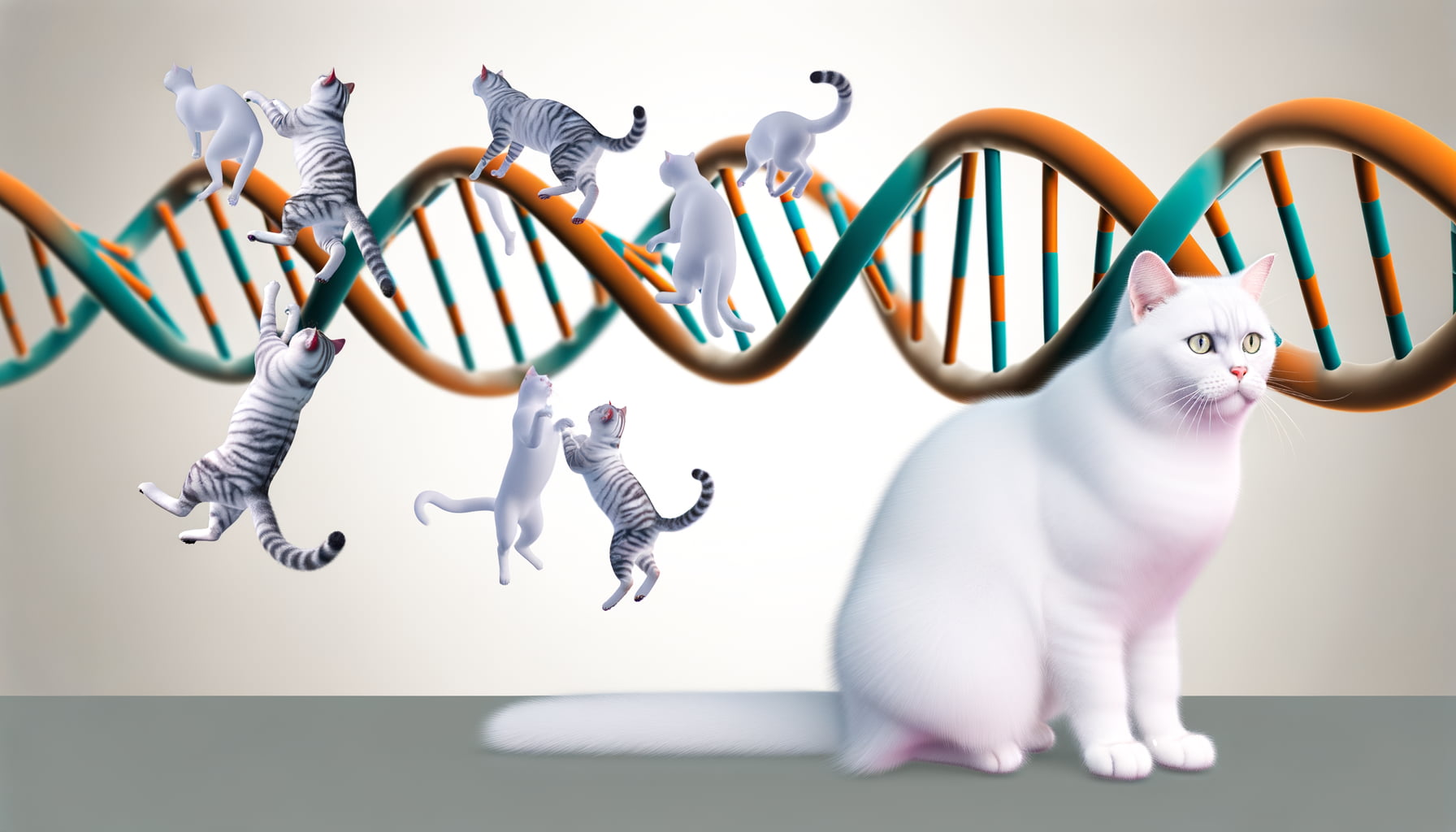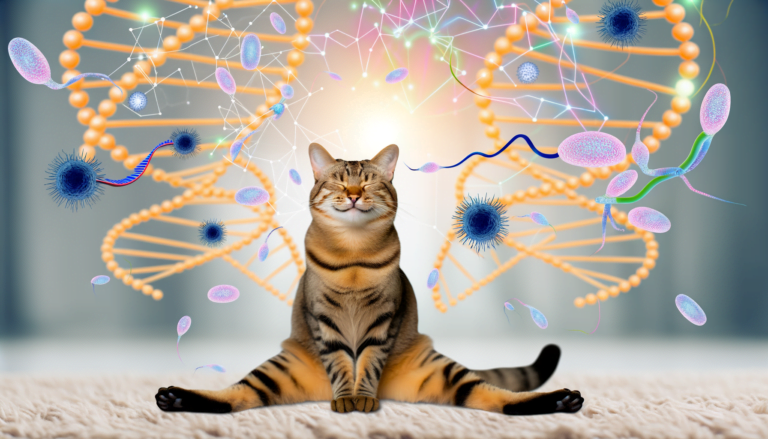Decoding the Health Mysteries: Are White Cats More Susceptible to Health Problems?
Contrary to common misconceptions, the color of a cat’s fur — white or otherwise — does not inherently lead to more health problems. However, it’s worth noting that white cats, particularly those with blue eyes, have a higher possibility of being born deaf. The gene that causes a cat to have white fur is frequently associated with the genetic cause for congenital deafness, notably when the cat also has one or two blue eyes. Be aware that this doesn’t imply that all white and/or blue-eyed cats will be deaf, it simply means they are more at risk. Besides, there are numerous health factors primarily determined by a cat’s genetic predispositions, diet, and overall care than by their fur color.
Measures to Enhance the Health and Wellness of White Cats

Ensuring the wellness of your white cat can be an engaging task, promising a stronger bond and a healthier pet. One essential measure is regular veterinary check-ups. These not only aid in catching potential health issues early, but also provide an opportunity for preventive care. Immunizations, nutrition advice, and early disease detection are part and parcel of these visits.
Secondly, sun protection is crucial for white cats as their coat lacks pigmentation, making their skin susceptible to sun damage. Therefore, it’s necessary to limit their sun exposure, particularly during the peak sun hours. When your cat does enjoy time outdoors, consider a pet-safe sunscreen to provide an added layer of protection.
Lastly, maintaining optimal weight through balanced nutrition and regular exercise is key. Overweight cats are at increased risk for various health concerns, including diabetes. Offering a high-quality diet and engaging your cat in play sessions can help manage their weight. In essence, with preventive care, sun protection, and weight control, you can significantly enhance your white cat’s health and wellness.
Common Health Issues Among White Cats

White cats can face a unique host of health issues, often stemming from their genetics. One of the foremost concerns is deafness. Many white felines with blue eyes, especially when bilaterally present, are genetically predisposed to hearing loss. A crucial gene associated with a white coat is also linked to the development of the ear, particularly impacting nerve growth, which can lead to deafness.
Beyond hearing impairment, the distinctive white coat can also make cats more susceptible to skin cancer. Without the protection of darker fur, their skin is more exposed to harmful ultraviolet rays. This vulnerability is intensified if they spend a lot of time in the sun. Skin diseases can often be overlooked in the initial stages as they may not be visible beneath the fur, underlying the importance of regular check-ups.
Moreover, certain genetic disorders may be more prevalent among white cats, depending on their pedigree. For instance, some pure breeds like Persians may have a higher risk of polycystic kidney disease (PKD). Despite these potential health issues, with appropriate care and regular veterinary intervention, white cats can lead healthy, fulfilling lives.
Impact of Coat Color on Cat’s Health

One might question whether the color of a cat’s fur can influence their health. Indeed, coat color in cats isn’t just a matter of aesthetics. It can also serve as an indicator for potential health issues. Certain genes linked to coloration may have implications on a cat’s health status, primarily because they are also associated with biological functions beyond mere pigmentation.
Consider white cats, for example. They can be more prone to certain conditions due to the genetic aspects related to their white coat. While the health issues aren’t caused directly by the white fur, they are a product of the same genetic components that influence color. This genetic cluster can bring about specific vulnerabilities. For instance, white cats have a higher predisposition to congenital deafness. It’s predominantly seen in blue-eyed white cats, but can occur in cats with other eye colors as well.
Another aspect to consider with white coat color is increased susceptibility to sunburn and skin cancer. A white cat’s skin absorbs sunlight more easily, often leading to sunburn, and long-term exposure could lead to skin cancer, especially on their ears and noses. For this reason, it’s essential to manage sunlight exposure in white cats. So, while a white coat itself doesn’t cause health problems, associated genetic factors and light sensitivity may lead to specific issues.
Understanding the Genetics of White Cats

The genetics of white cats is a topic rich in complexity. It primarily revolves around two genes – the W gene responsible for dominant white coloration, and the w gene making for non-white colors. A cat’s color always boils down to these genes interaction. If a cat inherits the W gene from either parent, it would be white, while only the homozygous inheritance of the w gene will yield a non-white cat. All-white cats can have either blue, orange, or odd-colored eyes due to these genetic permutations.
Interestingly, the genes responsible for white coloration can also impact the cat’s hearing ability. Particularly, white-furred cats with blue eyes are prone to genetic deafness. This intriguing connection comes to light upon understanding that the same cells that cause pigmentation in cats’ fur, skin, and eyes – known as melanocytes – are also crucial for the proper functioning of the inner ear.
Crucially, not all white cats are genetically equal. There is a set known as “false white,” appearing white but genetically are not. These cats express a factor marked as Inhibitor (denoted as I), suppressing color in the cat thereby giving it a white appearance, while genetically they may not be white. In these cases, the association between color, hearing, and health issues can be different, showcasing the true complexity of feline genetics.
Conclusion
After exploring the various health mysteries surrounding white cats, it is evident that they may indeed be more susceptible to certain health problems. However, further research and studies are needed to fully understand the unique challenges that white cats face. By decoding these mysteries, we can better care for our furry companions and ensure they live happy and healthy lives.
Through [Collection], [Collection], [Collection], and [Collection], we have gained valuable insights into the potential health issues white cats may encounter. By staying informed and proactive in their healthcare, pet owners can help mitigate these risks and provide the best possible care for their beloved white feline friends.






